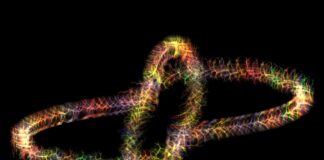Bryce is a versatile software application primarily used for 3D modeling, rendering, and landscape design. It has been an important tool in various industries, including architecture, animation, gaming, and film production. Below are some key aspects and important things to know about Bryce:
History and Development: Bryce was originally developed by Eric Wenger and Philip Staiger in the 1990s. It was later acquired by Corel Corporation. Since then, it has gone through several updates and versions, with each iteration bringing improvements and new features.
User-Friendly Interface: Bryce is known for its user-friendly interface, making it accessible to both beginners and experienced 3D artists. Its intuitive drag-and-drop functionality allows users to create stunning landscapes and 3D scenes without extensive technical knowledge.
Terrain Modeling: One of Bryce’s standout features is its terrain modeling capabilities. Users can easily generate realistic terrains, mountains, valleys, and other landscapes using the built-in terrain editor. This tool provides control over parameters such as elevation, roughness, and erosion.
Materials and Textures: Bryce offers a wide range of materials and textures to enhance the realism of 3D scenes. Users can apply textures to terrain, objects, and skies, and even create custom materials. Realistic water, reflective surfaces, and atmospheric effects are some of the options available.
Lighting and Rendering: Bryce excels in creating stunning lighting effects. It supports both traditional and HDRI (High Dynamic Range Imaging) lighting techniques. Users can adjust the position and intensity of lights to achieve the desired mood and ambiance in their scenes. The rendering engine provides options for quality and resolution settings.
3D Object Library: Bryce comes with a library of pre-built 3D objects, including plants, buildings, and various props. Users can easily import these objects into their scenes and manipulate them to fit their vision. Additionally, Bryce supports 3D model import from other software.
Animation Capabilities: While not as powerful as dedicated animation software, Bryce allows users to create basic animations by keyframing object positions, camera movements, and other parameters. This is useful for creating flythroughs or simple animated scenes.
Integration with Other Software: Bryce can be integrated with other 3D software applications, such as DAZ Studio and Poser. This interoperability expands its functionality and allows for more complex character animations and interactions within Bryce-created environments.
Community and Tutorials: There is a dedicated community of Bryce users who share tips, tutorials, and resources online. This supportive community can be a valuable resource for beginners and advanced users looking to expand their skills.
Cost and Availability: As of my last knowledge update in September 2021, Bryce was available for purchase from Corel Corporation’s website. Pricing and availability may change over time, so it’s advisable to visit Corel’s website or other reliable sources for the most up-to-date information.
Bryce has a rich history of evolution since its inception in the 1990s. Originally developed by Eric Wenger and Philip Staiger, it quickly gained popularity for its ability to simplify 3D modeling and rendering. Over the years, it has seen various updates and improvements, making it a versatile tool for artists, architects, and designers alike.
One of the standout features of Bryce is its terrain modeling capabilities. Users can effortlessly create natural landscapes, mountains, valleys, and more through its intuitive terrain editor. This tool offers fine-grained control over terrain parameters, allowing artists to craft realistic and diverse environments. Elevation, roughness, erosion, and other factors can be adjusted to achieve the desired look.
Materials and textures play a crucial role in making 3D scenes appear lifelike, and Bryce doesn’t disappoint in this regard. The software provides a vast library of materials and textures that can be applied to terrains, objects, and skies. Furthermore, users have the flexibility to create custom materials to suit their specific project requirements. Whether you’re simulating water surfaces, reflective materials, or atmospheric effects, Bryce offers the tools to do so effectively.
Lighting and rendering are also key strengths of Bryce. Artists can use various lighting techniques, including traditional and HDRI lighting, to set the mood and atmosphere of their scenes. The positioning and intensity of lights can be adjusted to achieve stunning visual effects. The rendering engine offers options for controlling the quality and resolution of the final output, ensuring that projects can be tailored to specific needs.
Bryce’s 3D object library is a valuable resource, especially for those looking to populate their scenes quickly. The library includes a wide array of pre-built 3D objects such as plants, buildings, and props. These objects can be seamlessly integrated into scenes, and users can further customize them to align with their creative vision. Additionally, Bryce supports the import of 3D models from other software, allowing for greater flexibility and compatibility.
While Bryce is not a dedicated animation tool, it does offer basic animation capabilities. Users can create simple animations by keyframing object positions, camera movements, and other parameters. This functionality is useful for producing flythroughs or adding subtle movements to scenes. For more advanced animations, Bryce can be integrated with other 3D animation software, enhancing its capabilities.
Bryce also benefits from an active and supportive user community. Many online forums and websites are dedicated to sharing tips, tutorials, and resources for Bryce users. This sense of community can be invaluable for both beginners and experienced users looking to expand their skills and exchange ideas.
Finally, it’s worth noting that the cost and availability of Bryce may have changed since my last knowledge update in September 2021. Therefore, I recommend visiting Corel Corporation’s official website or other trusted sources for the most current information regarding pricing, system requirements, and availability of Bryce.
Bryce is a versatile 3D modeling and rendering software known for its user-friendly interface, powerful terrain modeling capabilities, rich library of materials and textures, advanced lighting and rendering features, and the convenience of a 3D object library. While it offers basic animation capabilities, its true strength lies in creating stunning static 3D scenes and landscapes. Additionally, Bryce benefits from an active and supportive user community that shares resources and knowledge. Keep in mind that software details and availability may change over time, so it’s essential to refer to the latest information from the software developer for the most accurate and up-to-date details.
In conclusion, Bryce is a user-friendly 3D modeling and rendering software known for its terrain modeling capabilities, intuitive interface, and versatility. It is a valuable tool for artists and designers working in various creative fields, offering the means to create stunning 3D landscapes and scenes. Keep in mind that software features and availability can change, so always check the latest information from the software developer for the most accurate details.














